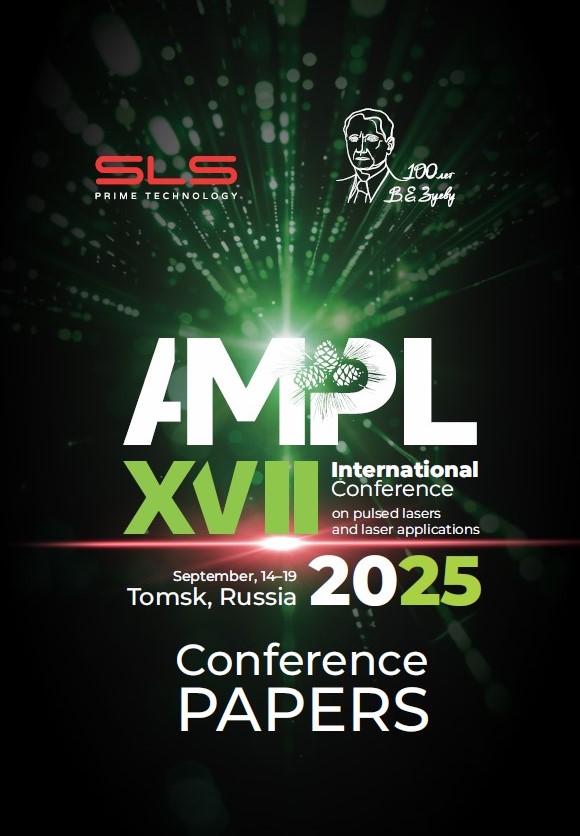UDC 535.2
UDC 621.373.8
UDC 621.391.6
CSCSTI 29.31
Russian Classification of Professions by Education 03.03.02
Russian Library and Bibliographic Classification 223
Russian Trade and Bibliographic Classification 6135
BISAC SCI053000 Physics / Optics & Light
Vortex Bessel-Gaussian laser beams are one of the promising types of vortex beams, since they have the property of invariance to a certain extent. This paper presents an optical communication system using vortex Bessel-Gaussian laser beams. The detection strategy of this optical communication system is based on the orthogonality of vortex Bessel-Gaussian laser beams. The transmitter encodes the message symbols into the values of the topological charges of vortex Bessel-Gaussian laser beams. At the receiver, a multichannel correlation detector determines the value of the topological charge, i.e. the message symbol, by the value of the correlation metrics of the mutual coherence of the fields of vortex Bessel-Gaussian beams. The results of a theoretical study of correlation metrics of mutual coherence at the receiving aperture of fields of vortex Bessel-Gaussian beams with various topological charges in a turbulent atmosphere are presented. The expression for the second-order mutual coherence function of vortex Bessel-Gaussian beams in a turbulent atmosphere with different topological charges is obtained in the paraxial approximation using the extended Huygens – Fresnel principle. When constructing the solution, a quadratic approximation of the function describing the distorting influence of random inhomogeneities of the medium was used. The correlation metrics of mutual coherence at the receiving aperture of fields of Bessel-Gaussian beams with different topological charges are analyzed depending on the optical thickness of atmospheric turbulence. It is shown that the possibility of an optical communication system using Bessel-Gaussian beams based on topological charge coding of a beam with a multichannel correlation detector at the receiver is not significantly limited by the distorting effect of atmospheric turbulence.
optical vortex, Bessel-Gaussian beam, optical communication system, atmospheric turbulence, coherence, mean intensity
1. Trichili A., Park K.-H., Zghal M., Ooi B.S., Alouini M.-S. Communicating using spatial mode multiplexing: potentials, challenges and perspectives // IEEE Commun. Surveys & Tutorials. 2019. V. 21. N 4. P. 3175-3202. DOI:https://doi.org/10.1109/COMST.2019.2915981.
2. Kupferman J., Arnon Sh. Direct detection receiver for vortex beam // J. Opt. Soc. Am. A. 2018. V. 35. N 9. P. 1543-1547. DOI:https://doi.org/10.1364/JOSAA.35.001543.
3. Shao W., Huang S., Liu X., Chen M. Free-space optical communication with perfect optical vortex beams multiplexing // Opt. Commun. 2018. V. 427. P. 545-550. DOI:https://doi.org/10.1016/j.optcom.2018.06.079.
4. Guo Z., Wang Z., Dedo M.I., Guo K. The orbital angular momentum encoding system with radial indices of Laguerre-Gaussian beam // IEEE Photon. J. 2018. V. 10. N 5. 7906511. DOI:https://doi.org/10.1109/JPHOT.2018.2859807.
5. Wang Z., Zhang N., Yuan X.-C. High-volume optical vortex multiplexing and de-multiplexing for free-space optical communication // Opt. Express. 2011. V. 19. N 2. P. 482-492. DOI:https://doi.org/10.1364/OE.19.000482.
6. Gu Y. Statistics of optical vortex wander on propagation through atmospheric turbulence // J. Opt. Soc. Am. A. 2013. V. 30. N 4. P. 708-716. DOI:https://doi.org/10.1364/JOSAA.30.000708.
7. Yang J., Zhang H., Zhang X., Li H., Xi L. Transmission characteristics of adaptive compensation for joint atmospheric turbulence effects on the OAM-based wireless communication system // Appl. Sci. 2019. V. 9. N 5. 901. DOI:https://doi.org/10.3390/app9050901.
8. Chen M., Dholakia K., Mazilu M. Is there an optimal basis to maximize optical information transfer? // Sci. Rep. 2016. V. 6. 22821. DOI:https://doi.org/10.1038/srep22821.
9. Eyyuboglu H.T. Optical communication system using Gaussian vortex beams // J. Opt. Soc. Amer. A. 2020. V. 37. N 10. P. 1531-1538. DOI:https://doi.org/10.1364/JOSAA.400899.
10. Lukin I.P. Kogerentnost' bessel'-gaussovyh puchkov, rasprostranyayuschihsya v turbulentnoy atmosfere // Optika atmosf. i okeana. 2017. T. 30. № 8. S. 672-681; Lukin I.P. Coherence of Bessel-Gaussian beams propagating in a turbulent atmosphere // Atmos. Ocean. Opt. 2018. V. 31. N 1. P. 49-59. DOI:https://doi.org/10.1134/S1024856018010098.
11. Lukin I.P., Lukin V.P. Propagation of a partially coherent Bessel-Gaussian beam in a uniform medium and turbulent atmosphere // Photonics. 2024. V. 11. N 6. 562. DOI:https://doi.org/10.3390/photonics11060562.
12. Chen C., Yang H., Tong S., Lou Y. Changes in orbital-angular momentum modes of a propagated vortex Gaussian beam through weak-to-strong atmospheric turbulence // Opt. Express. 2016. V. 24. N 7. P. 6959-6975. DOI:https://doi.org/10.1364/OE.24.006959.
13. Andrews L.C., Phillips R.L. Laser beam propagation through random media. Second edition. – Bellingham, Washington: SPIE Press, 2005. – 783 p. DOI:https://doi.org/10.1117/3.626196.





